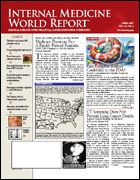Publication
Article
Internal Medicine World Report
The President's Healthcare Plan: Affordable or Ill-Conceived Choices?
Author(s):
Professor Scott is Research Professor at the Health Law and Policy Institute, University of Houston Law Center, Texas.
In his January State of the Union address, President Bush proposed 2 initiatives that he says will help more Americans afford basic private health insurance. First, the federal tax code would be amended to allow a standard deduction for health insurance. This part of the plan is intended to “level the playing field” for individuals who buy their own health insurance so that they receive the same tax advantage as those who get health insurance through their employers.
The second part of the plan attempts to address those who remain unable to afford coverage. The president’s Affordable Choices initiative will provide federal funding through state grants to help low-income citizens purchase private health insurance. It is significant that the Affordable Choices initiative does not provide for additional federal spending on healthcare but is rather a reallocation of existing healthcare resources.
The president’s plan would amend the tax code in 2 important ways. Employer contributions to health insurance would, for the first time, be included in taxable income. This would, however, be coupled with a new standard deduction for health insurance of $15,000 for families and $7500 for individuals. The standard deduction would be available to all taxpayers, whether they purchase individual insurance or obtain insurance through their jobs. This could provide an incentive for individuals to purchase private health insurance and simultaneously reduce the present bias in favor of employer-provided insurance.
The president also argues that the change in tax law would help reduce the cost of health insurance. Essentially, individuals would get the same tax deduction, regardless of how much they spend on health insurance, which should encourage people to purchase policies that provide the highest value.
The Treasury Department has estimated the effect of the new plan on taxpayers in various tax brackets. A family of 4 earning $60,000 annually that is not covered by employer-provided insurance would pay $5100 for an “average” policy and $4100 for a “basic” policy, receiving no tax benefit under current law. Under the president’s plan, that family would receive a $15,000 deduction, reducing their taxes by $4545, so their out-of-pocket additional cost for an average insurance policy would only be $555. If they instead purchased a “basic” policy, they would end up with $445 more than if they remained uninsured.
If the same family receives insurance through their workplace, they would still pay $303 less in taxes after the standard deduction for an average policy. But they could also switch to a low-cost basic policy, receive the same $303 tax savings, and end up with $8000 more in wages, which would act as an incentive to choose less expensive insurance and higher wages.
Finally, if a single mom with 2 children and $20,000 of total compensation was to purchase individual health insurance, she would pay $5100 for an average policy and $4100 for a basic policy. Under the president’s proposal, she could buy a basic policy and save $2531 on her taxes, reducing the cost of the average policy to $2569. Or she could choose the basic policy, and her cost would be $1569 after taxes. The examples are available in more detail at www.treas.gov
As can be seen from these scenarios, there are 2 fundamental weaknesses in the proposed plan:
• First, the tax deduction will result in a more valuable subsidy for higher-income taxpayers as opposed to low-income taxpayers who need more help. Many very-low income taxpayers have no tax liability, so a tax deduction is worthless to them. Removing the existing bias in favor of employer-provided insurance could also lead some employers, particularly small and medium-sized employers, to discontinue healthcare coverage for their employees.
• It is difficult to fairly evaluate the second prong of the Affordable Choices initiative, since so few details of the plan are currently available; but it will also be difficult to help states assist low-income citizens purchase private health insurance without adequate funding, and no new federal funding is called for in the plan.
For more on this, see Burman LE, et al. The President’s Proposed Standard Deduction for Health Insurance: An Evaluation (February 14, 2007), available at www.taxpolicycenter.org





